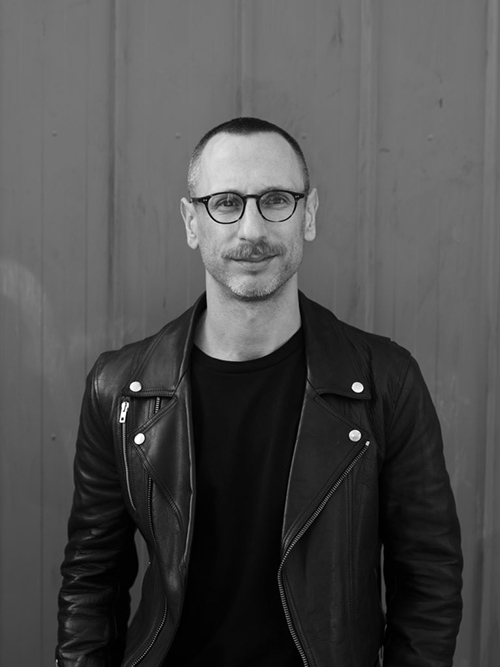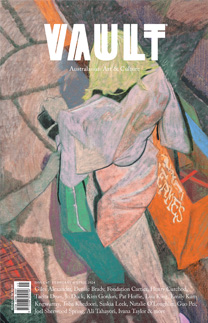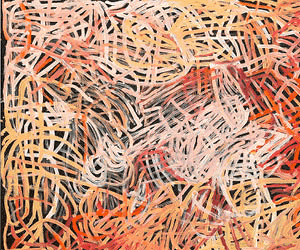Q&A: Looking back and looking forward on PHOTO 2021 with Elias Redstone right now

Image credit: Portrait of Elias Redstone by Hoda Afshar
VAULT sat down with PHOTO 2021 artistic director Elias Redstone to discuss how the Festival has unfolded over the course of its development and realisation. Facing an upheaval of the program due to COVID-19 restrictions, the Festival adjusted its original plan for PHOTO 2020, and proved to capably embrace its founding model that engages public space, collaboration, and dynamic accessibility to programs, events and exhibitions. Now with its final weekend in sight as programming wraps up on Sunday 7 March, 2021, we look back on what has been and take time to look forward to the next moves for the Festival and its director.
In the face of major changes to the festival – namely, pivoting from PHOTO 2020 to PHOTO 2021 – what are some of the benefits you have seen through adjustments to the calendar and thus program?
While there has been renewed interest in presenting art in public space since COVID-19, this was always built into the way we considered the Festival program: to use the city as both inspiration and backdrop for art.
That said, we did have to totally reinvent our events and education programs in light of COVID-normal guidelines and the travel restrictions that prevented international artists and curators from attending in person. We launched PHOTO LIVE immediately as a way to provide a platform for artists and photographers to speak about their work, and this program took place online through 2020. It has been hugely successful, culminating in IRL and online events at PHOTO 2021. Moving parts of the program online, including what became our expanded symposium PHOTO IDEAS, meant that we were able to include speakers that otherwise would not have been able to participate, and reach larger audiences at the same time.
Travel restrictions also inspired us to create a virtual tour of the outdoor artworks in the Festival, with support from Australia Council for the Arts. This will allow audiences who cannot attend in person to move through the Festival ‘virtually’ and view the public space commissions as intended. It is the first time I have seen a photography festival documented in this way, and is just one of the many ways we have been innovating.
Can you share some insight into what it has been like working across so many contexts – from working with artists, arts institutions and government agencies – through the satellite-based festival?
It has been an amazing experience launching PHOTO 2021, creating a photography festival from scratch that builds on the incredible photography and visual art community both in Melbourne and across Victoria. From the start, the intention was to provide an opportunity for the whole sector to come together, to collaborate and celebrate the art ecosystem that exists here, to connect with the international photography sector, and to shine a spotlight on Melbourne – and Victoria – as a global hub for photography.
From the start, everyone I spoke to understood the vision, integrity and potential of the Festival, from artists and curators to directors of museums and galleries. With each conversation, it was thrilling to watch the Festival take shape and become what I hoped it would – an important new biennial that celebrates and commissions the very best new photography and new ideas. Along the way, it has been an opportunity to work with some of the artists I most admire such as Zanele Muholi, Sam Contis, Hoda Afshar and Brook Andrew, as well as discovering some incredible photographers along the way.
What has been most exciting about the partnerships we developed was providing new opportunities and commissions for artists with organisations that have not traditionally done this, such as the Parliament of Victoria and Royal Botanic Gardens Victoria. We have commissioned over 500 metres of art works with the Metro Tunnel Creative Program and working with Regional galleries has extended the program across the state. I am relatively new to Australia, and the whole process has given me an insight into how the art sector functions here, as well as an opportunity to collaborate with so many great museums and galleries. Through devolving the curation of the Festival – each venue curates its own response to the central theme – it has created an incredibly rich and diverse artistic program, and provided space for new voices to come through.
However, I definitely did not do this alone. I was lucky to be surrounded by an incredible team who all went above and beyond to deliver PHOTO 2021.
Moving into the final days of the PHOTO 2021, how will you be spending the last weekend and what is next on the horizon for you and the festival?
I have been planning this Festival for 4 years, so I really want to make sure I can be present and immerse myself in the program before PHOTO 2021 comes to a close. This weekend I will be revisiting the outdoor commissions and visiting the last few exhibitions I am yet to see (there are a lot!). It is important to see how people engage with and respond to the work, and it has been great seeing people move through PHOTO 2021, Festival Guide in hand, crossing off exhibitions and artworks on the map as they go. If I have time, there are also some PHOTO 2021 artist-led walks this weekend that I am hoping to join.
After the Festival I am looking forward to having a day off! There is not much time to rest however, as we have already started planning the next Festival: PHOTO 2022.
PHOTO 2021 continues until Sunday 7 March, 2021.
Visit the Festival website for the full program.
... Subscribe

























